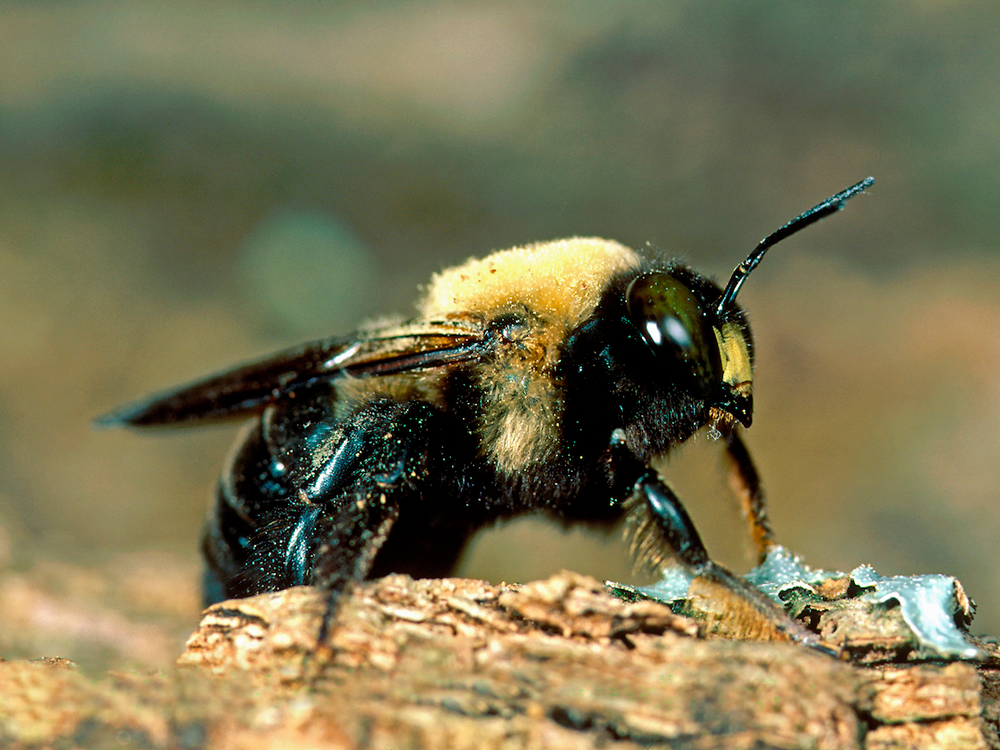The female
Carpenter Bee will “drill” beautifully round holes in doors, eaves, windowsills, railings, and in trees and make a tunnel or gallery to lay her eggs. The holes are usually one half inch in diameter. From the initial entrance holes, the female will tunnel to what she feels is a safe distance from the entrance, approximately one inch or so, and then begin to create other tunnels, or rooms, off of the main entrance hole that may be anywhere from four to ten inches long. These other rooms or tunnels are where she will lay her eggs. Once they begin to expand tunneling from the initial hole, Carpenter Bees can cause structural damage to the wood.
One Carpenter Bee hole entrance could have several tunnels. Each year, Carpenter Bees will hibernate in the tunnels during the winter until the spring, when they will expand the tunnels for new nests and another season. If left untreated, there could be several generations of Carpenter Bees, and tunneling activity occurring within the same wood area.
Carpenter Bees prefer to make nests in untreated wood or damaged wood. Due to this, wood areas should be sealed, stained, or painted to deter Carpenter Bee activity. The most common areas that Carpenter Bee activity is found is in eaves, porches, decks, wood siding, log cabins, wood swing sets, wood fences, and other wood areas that are approximately two inches or thicker. Carpenter Bees are most active during the spring months of April and May during their mating season and, again in August and early fall when newly hatched Carpenter Bees emerge.
A
sign of Carpenter Bee activity is the telltale signal of perfect holes in wood surfaces. You may also see wood debris under the Carpenter Bee hole areas where the activity is present. However, more often than not, Carpenter Bee activity is noticed when you see them. Male Carpenter Bees can often be seen hovering in an area where a nest is located in an effort to protect the nest. You may also see the female Carpenter Bee when she enters or exits the nesting site.
Integrity Pest Solutions offers
One Time treatment services with applicable follow-up services, as needed, for Carpenter Bees and all other
stinging insects in Delaware.
Carpenter Bee services include a thorough inspection and evaluation by a trained technician to determine affected areas and proper treatment of the infestation. Direct, targeted treatment to the nesting / tunnel areas of the Carpenter Bee activity will be done in order to provide the most effective treatment. Sealing of entry holes will be done or recommended to eliminate potential re-infestation and future return of other Carpenter Bees to the same nesting site. Upon completion of service, it is recommended that the homeowner properly paint or varnish the affected area to deter Carpenter Bee activity.
Learn more about our services here

